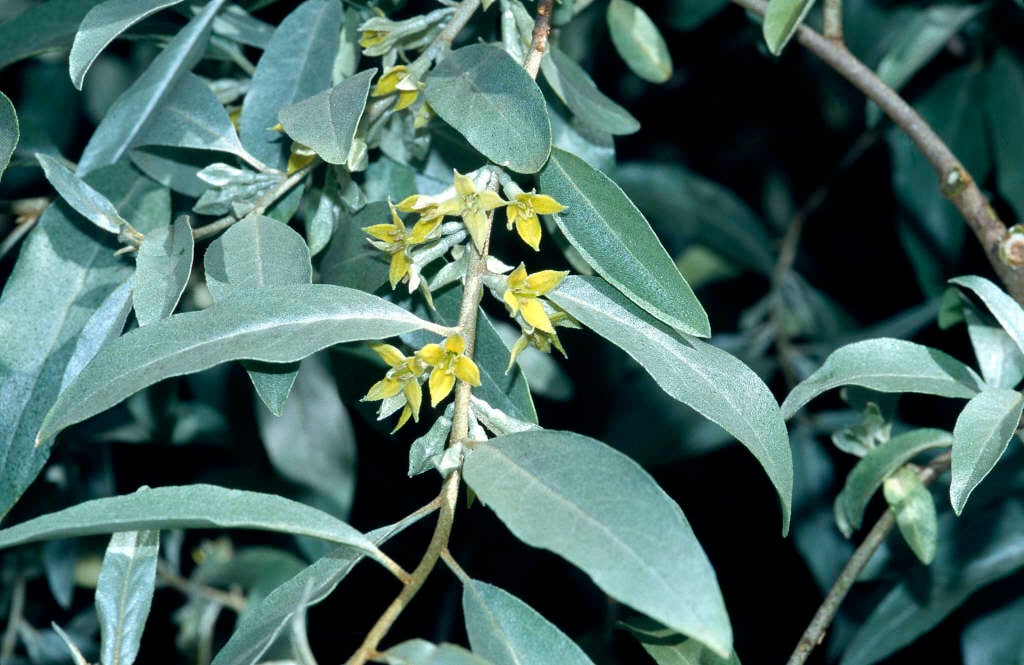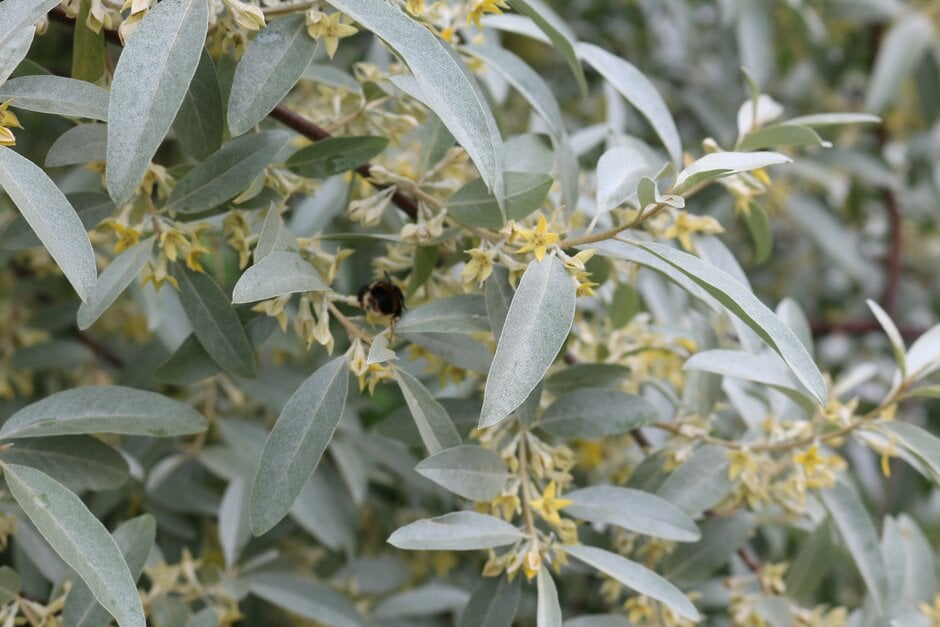Elaeagnus 'Quicksilver'
oleaster 'Quicksilver'
A large, deciduous, suckering shrub with silvery shoots, silvery-scaly, ovate leaves and small, fragrant creamy-yellow flowers from silvery buds in summer
Synonyms
Elaeagnus angustifolia Caspica GroupElaeagnus angustifolia 'Quicksilver'
see moreElaeagnus angustifolia var. caspica
Size
Ultimate height
2.5–4 metresTime to ultimate height
5–10 yearsUltimate spread
2.5–4 metresGrowing conditions
Moisture
Moist but well–drained, Well–drainedpH
Acid, Alkaline, NeutralColour & scent
| Stem | Flower | Foliage | Fruit | |
| Spring | Grey Silver | |||
|---|---|---|---|---|
| Summer | Yellow | Grey Silver | ||
| Autumn | Grey Silver | Yellow | ||
| Winter |
Position
- Full sun
Aspect
West–facing or East–facing or South–facing
Exposure
Exposed or ShelteredDrought resistance
Yes Hardiness
H5Botanical details
- Family
- Elaeagnaceae
- Native to GB / Ireland
- No
- Foliage
- Deciduous
- Habit
- Bushy
- Genus
Elaeagnus can be deciduous or evergreen shrubs or small trees, with simple, often silvery-scaled leaves, and small fragrant tubular flowers borne in clusters in the leaf axils, and followed by small juicy fruit
- Name status
Accepted
How to grow
Cultivation
Grow in well-drained soil in full sun, tolerant of dry soil and coastal winds but may become chlorotic on shallow chalky soils
Propagation
Propagate by semi-hardwood cuttings or remove rooted suckers in autumn
Suggested planting locations and garden types
- Cottage and informal garden
- Wildlife gardens
- Coastal
- Mediterranean climate plants
- Hedging and screens
- Flower borders and beds
Pruning
Pruning group 1; sucker removal if necessary, in autumn
Pests
Generally pest-free but may be susceptible to elaeagnus sucker
Diseases
May be susceptible to honey fungus, coral spot or leaf spot (fungal) see leaf damage on woody plants
Love gardening
Sign up to receive regular gardening tips, inspiration, offers and more
View our Privacy Policy
Get involved
The Royal Horticultural Society is the UK’s leading gardening charity. We aim to enrich everyone’s life through plants, and make the UK a greener and more beautiful place.

